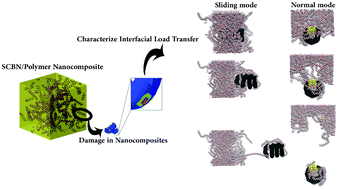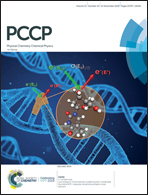How to characterize interfacial load transfer in spiral carbon-based nanostructure-reinforced nanocomposites: is this a geometry-dependent process?†
Abstract
There is a great deal of attention given to spiral carbon-based nanostructures (SCBNs) because of their unique mechanical, thermal and electrical properties along with fascinating morphology. Dispersing SCBNs inside a polymer matrix leads to extraordinary properties of nanocomposites in diverse fields. However, the role of the interfacial mechanical properties of these nanocomposites remains unknown. Here, using molecular dynamics simulations, the characteristics of interfacial load transfer of SCBN–polyethylene nanocomposites are explored. Considering the geometric characteristics of SCBNs, new insight into the separation behavior of nanoparticles in normal and sliding modes is addressed. Interestingly, the results show that the maximum force and the separation energy of the SCBNs are much larger than those of graphene because of interlocking of the coils and polymer. The heavy influence of changes in the geometric characteristics of SCBNs on the separation behavior is observed. Pullout tests reveal that the influence of parameters such as the length and number of polyethylene chains, temperature, and functionalization of the SCBNs on the interfacial mechanical properties is also significant. This study sheds new light in understanding the crucial effect of the interaction of SCBNs with polymer chains on the interfacial mechanical properties, which can lead to better performance of nanocomposites.

- This article is part of the themed collection: 2019 PCCP HOT Articles


 Please wait while we load your content...
Please wait while we load your content...